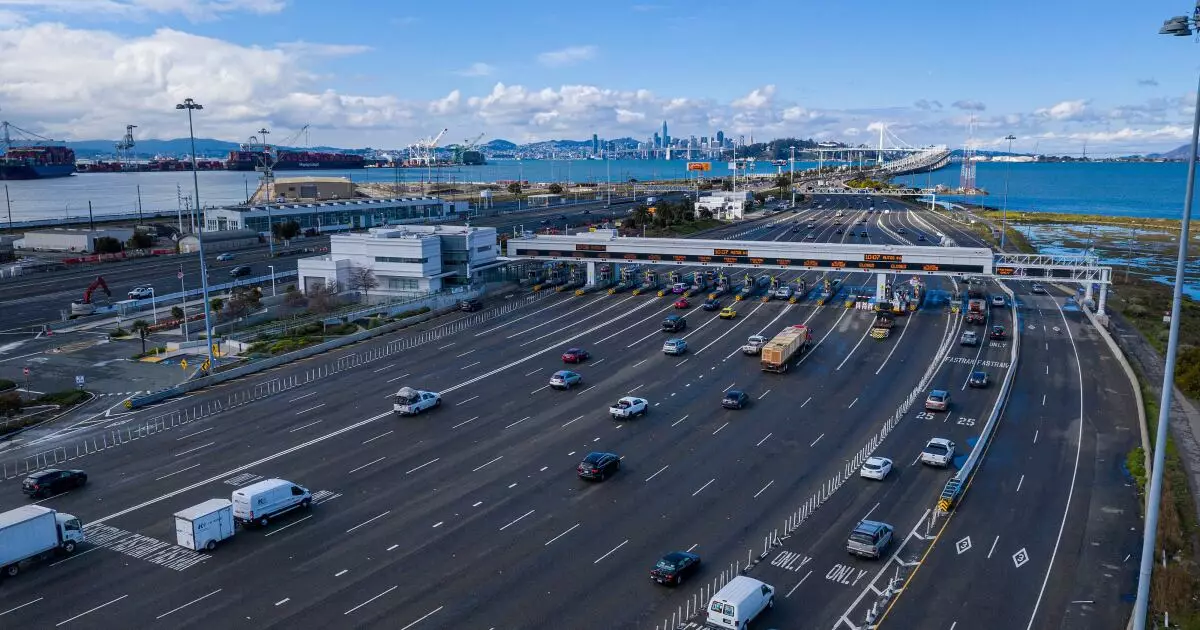67 Ways to Fund Our Roads: The Tolling Dilemma Facing America

In a landscape riddled with aging infrastructure and a growing need for innovation, two-thirds of states are grappling with transportation funding bills this year, hoping to identify viable alternatives to the gas tax. Amid the surging interest in electric and fuel-efficient automobiles, the traditional revenue streams that once bolstered road maintenance are rapidly becoming obsolete. States like Indiana are at the forefront of this conversation, exploring contentious measures like tolling on interstate highways to sustain their transportation infrastructure. This insatiable need for fiscal resources highlights a larger debate: should we embrace user fees or heavily rely on taxpayer dollars?
The American Road and Transportation Builders Association has reported a flurry of activity this year, with 37 states proposing a staggering 130 transportation funding bills. This rush towards creative financing is a testament to the manufacturers of our roads and bridges, but it also brings forth an avalanche of issues. Will we continue to penalize the everyday driver with heavier tolls to prop up a dilapidated system? Or will states find more equitable solutions that account for modern driving habits?
The Tolling Controversy and User Fees
It’s hard to overlook the apprehension surrounding tolling, especially when states such as Indiana have taken bold steps to allow tolls on highways. The legislation, backed by local Republican lawmakers, indicates a profound shift in how we think about road maintenance funding. Rep. Jim Pressel, a staunch advocate for this user-fee approach, argues that those who utilize the roads should pay for them. While theoretically appealing, this notion raises several critical questions: Who will be impacted the most by these tolls? How can we ensure that low-income drivers aren’t disproportionately burdened?
A fiscal analysis presented by this legislation claims Indiana could rake in $38.2 billion in revenue from tolls between 2029 and 2050. Such projections may sound alluring, but they are contingent on consistent roadway usage. With the looming threat of telecommuting and work-from-home arrangements becoming entrenched in the fabric of American life, are we banking on a model that may not hold?
Unfortunately, if history teaches us anything, it’s that revenue predictions are often optimistic at best. Moreover, the prevalent narrative surrounding the user-fee model frequently excludes a critical examination of equity and fairness. The assumption that everyone can simply “pay to play” neglects underlying socio-economic disparities.
A Patchwork of Solutions: The Rise of Alternative Revenue Streams
Diving deeper into the throng of new bills, we observe a strong focus on recurring revenue routes—25% of proposals fall under this category. Innovative strategies range from electric vehicle fees to road usage charges. Even Congress has begun to entertain these alternatives, which is a promising development amid stagnant gas tax revenues.
However, charging electric vehicles seems like a hasty fix in an era where we should be fostering cleaner transportation options. The Fair Share Act introduced by a group of Republicans is one such measure attempting to capture revenue from EV usage. While I appreciate the direction towards a more sustainable future, is it wise to place the onus of funding infrastructure on those who are making conscientious decisions for the environment? Wouldn’t it be better to seek larger systemic changes that could encompass all modes of transportation?
States like Maryland have passed bills to garner millions in transportation revenue through methods such as increased taxes and fees. However, these measures often burden the already overtaxed populace. Virginia’s new law to allow the issuance of revenue bonds brings a similar concern to light. While borrowing against future revenues may seem practical, it is essential to scrutinize the long-term implications of such moves. Are we simply kicking the can down the road, or are we establishing a sustainable framework for future generations?
Local Initiatives and Innovative Approaches
Aside from statewide efforts, local municipalities are stepping up by proposing supplementary funding measures. In Massachusetts, the Municipal Association is lobbying for increased funding to improve local roads and bridges—demonstrating that bottom-up solutions may often yield more immediate benefits than sweeping national initiatives. While the desire to fund infrastructure responsibly should be embraced, it must also be viable on the local level, where the impacts of mismanagement are felt most directly.
Meanwhile, ambitious projects like the I-5 Bridge Replacement in Washington aim to address critical connectivity issues while simultaneously considering the broader context of environmentally responsible development. Issuing bonds backed by tolls is a bold move, yet the efficacy of such proposals will ultimately hinge on whether they are accompanied by a transparent and accountable implementation strategy.
Ultimately, while the search for innovative transportation funding is both timely and necessary, we must recognize the complexities that accompany user fees, local options, and federal solutions. The stakes are too high to gamble on short-term fixes when our country’s future mobility hinges on responsible governance and equitable fiscal strategies.





